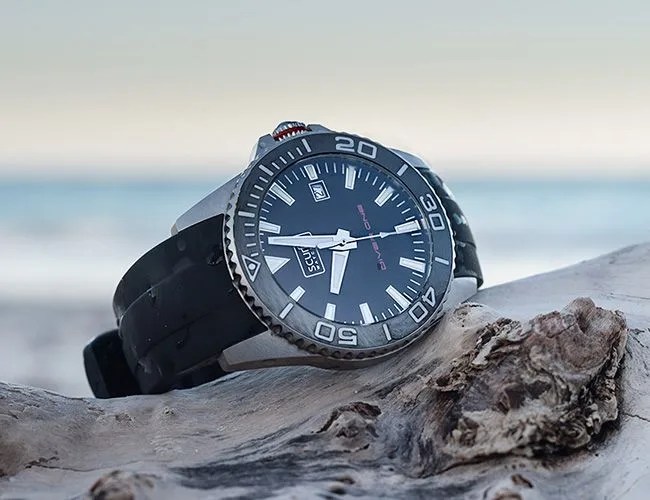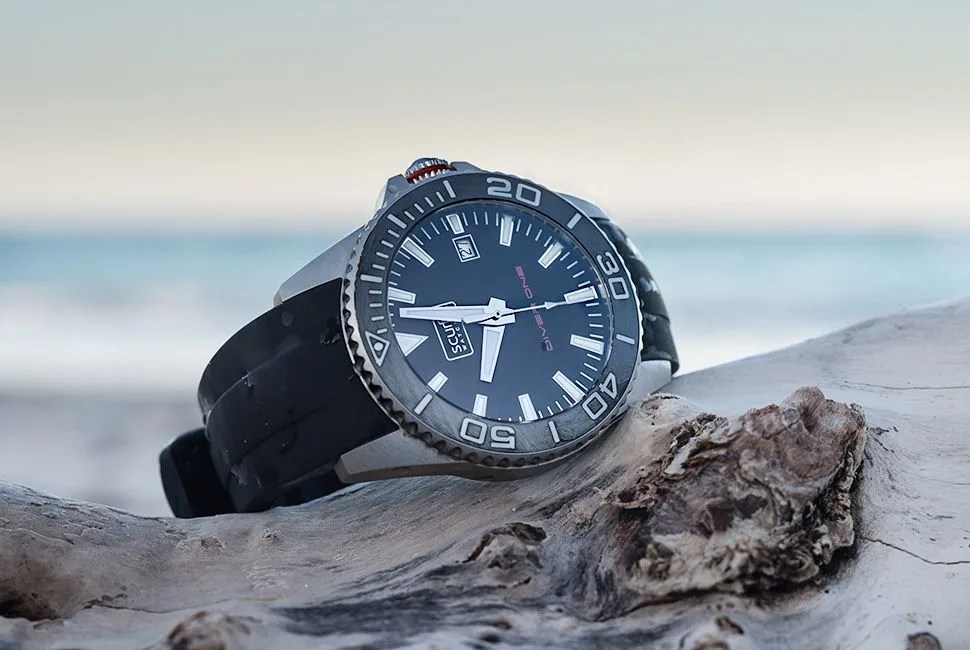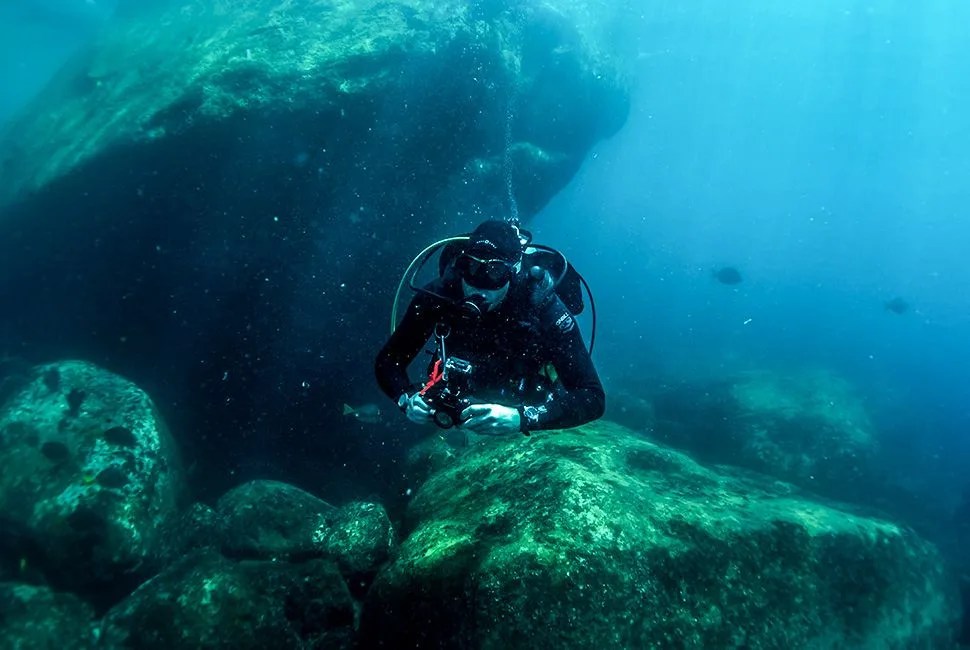4 photos
When did dive watches stop being dive watches and become precious man-jewelry? Sure, the digital dive computer has replaced the watch as the instrument of choice for underwater use, but most dive watches today have gotten expensive, transforming from tools for adventure to mere symbols of it. And that’s a shame, because they’re built more rugged than ever, with exotic case materials, sturdy movements and absurd depth ratings. Yet most guys leave their dive watches behind when they go to the beach or even hop in the pool. Well, the Scurfa Watches Diver One ($200) is a watch you can leave on 24/7 — and in fact, the company owner encourages you to.
Englishman and Scurfa founder Paul Scurfield knows a thing or two about diving and about watches. As a seasoned commercial diver working in the North Sea, he’ll spend more time underwater on a typical 28-day rotation than most of us will dive on holiday in our entire lives. The North Sea is where commercial diving has its roots, having grown from the needs of the burgeoning offshore oil industry of the 1960s. Divers in those days wore Rolex Sea Dwellers and Omega Ploprofs, watches now coveted by collectors, and whose modern descendants seldom see anything deeper than the kitchen sink. Scurfield is a longtime watch collector himself, favoring tool watches from Tudor and Rolex. But he wanted a dive watch that could once again be used for its original purpose without the fear of damaging or losing something that costs a month’s salary. So he set out to design one himself. The product is the $200 Diver One.
The Diver One is named for the primary position on a typical North Sea working dive. Diver Two assists in the water and the bellman stays in the diving bell as a tender. The watch itself, which Scurfield has tested on some of his dives, is a throwback to what a dive watch should be: a tool, no more, no less. Its 42mm case has the classic aesthetics of some of the Precista and CWC watches built for the Royal Navy in the 1970s, with straight lugs and steep crown guards surrounding a knurled screw-in crown. That crown, in addition to a screwed-on case back, ensures the Diver One’s 300 meters of water resistance — less than many more expensive desk divers but perfectly adequate, even if you’re welding pipe 800 feet under the North Sea.
For all its merits, the Diver One’s most impressive specification is its price.
The dial and hands are no-nonsense white-on-black sticks and a triangle, which glow into the night thanks to prodigious application of luminous paint. The Scurfa Watches logo has no sea creatures or tridents but simply bears the company name, as if the brand were merely an OEM supplier to the diving industry. In fact, the container the watch is shipped in is actually a modified version of the threaded plastic “twist box” that offshore components are shipped in.
By the late ‘70s, world navies were replacing their finicky, expensive issued dive watches with quartz-powered timepieces, for cost savings, better reliability and ease of battery replacement. For a working diver, there is no room for sentiment, and quartz became the right tool for the job, as evidenced by the countless Seiko and Citizen quartz divers still worn by diving professionals around the world. The Scurfa Diver One is powered by a Swiss Ronda Power Tech 515 movement, ensuring predictable accuracy through anything you can throw at it and grab-and-go ease if you let it languish in your dive locker during shore leave. A quartz movement also keeps the watch slim and light on the wrist.




